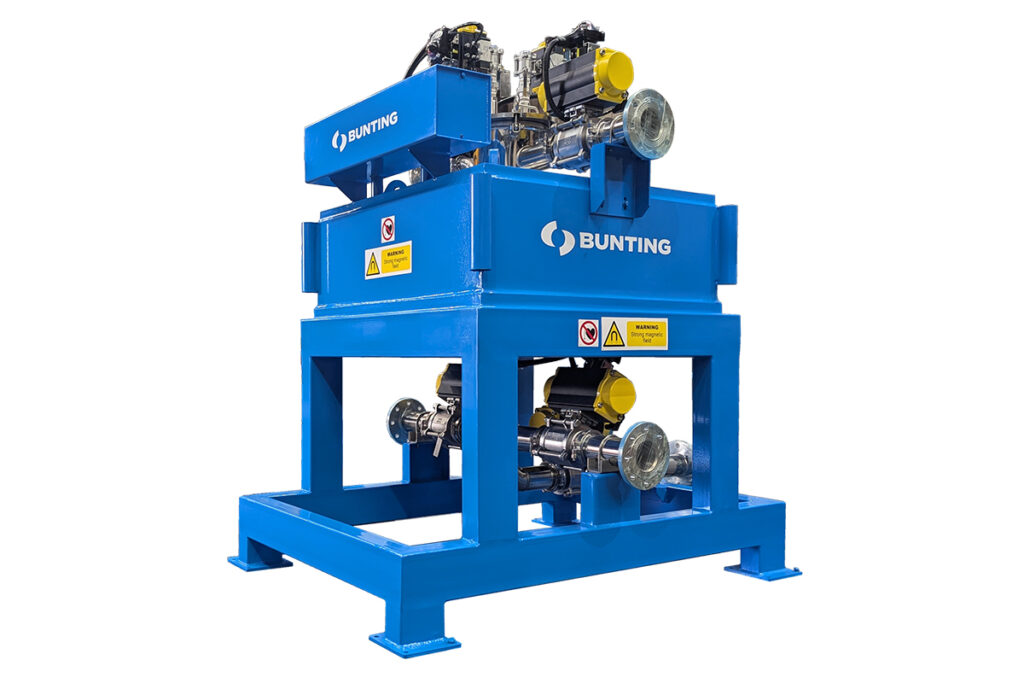Bunting Speaking at UK Mining Conference
By Paul Fears | 09 June 2025
Bunting Magnetics’ Applications Engineer, Michael Allen, is explaining the important role of magnetic separation in mining and mineral processing at the UK Mining Conference in Cornwall (11-12 June 2025, Falmouth, UK). The two-day conference brings together professionals from the global mining and mineral processing community.
Valuable Mineral Processing Experience
At the conference, Michael is joined by Professor Neil Rowson and experienced magnetic separation specialist, Phil Tree. Professor Rowson has worked in the mineral processing sector, both in industry and academia, since the late-1980s and manages Bunting’s laboratory in the UK. Professor Rowson oversees controlled test work on a wide range of mineral and recycling applications. Phil Tree has specialised in magnetic separation solutions for the mining, mineral processing and ceramics industry since the mid-1980s.

High-Intensity Magnetic Separators
During his short talk, Michael will highlight the use of high-intensity magnetic separation to maximise the recovery and purity of mineral ores. High intensity magnetic separators generate intense magnetic fields to enable to separation of weakly magnetic particles from non-magnetics. This includes purifying non-metallic minerals, such as silica sand and feldspar, and recovering valuable minerals such as when processing the Coltan ore (columbite-tantalite).
Mineral processors apply high intensity separation in both wet and dry applications.
For dry materials, there are several designs of magnetic separator to suit different separation objectives:
- Rare Earth Roll Separator: a two-pulley conveyor system with the head pulley constructed out of alternating rings of permanent Neodymium Iron Boron (NdFeB) Rare Earth Magnets and steel pole pieces. High separation efficiencies are generated by the design of the magnetic roll assembly utilising high-grade neodymium magnets and the optimum pole spacing to generate high magnetic field strengths and magnetic field gradients to maximise the magnetic force exerted on a particle as it passes over the roll;
- Magnetic Disc Separator: This sorting system is equipped with up to three independently working discs which generate magnetic field strengths up to 14,000 Gauss. The high magnetic forces that the MDS generates are able to extract paramagnetic particles from a free-flowing, dry product stream (100μm – 1.5mm);
- Induced Roll Magnetic Separator (IRS): The (IRS) uses electromagnetic fields to generate high-intensity magnetic fields. These magnetic fields enable the separation of weak and para-magnetic minerals (e.g. mica, iron-coated silica, etc) from non-metallic minerals (e.g. feldspar, silica sand, zircon, etc) in a dry state. Once cleansed, the non-metallic minerals are used in many industries, including ceramics and glass production;
Removing weakly magnetic particles from mineral slurries is undertaken using the high-intensity Electromagnetic Filter. With background fields reaching up to 10,000 Gauss, the magnetic separator is used to purify ceramic slips and glazes as well as minerals for glass and ceramics.

“There has never been a greater demand for magnetic separation, especially high-intensity,” explained Michael. “With many higher quality reserves already exhausted, mineral processors and mining companies are looking to process lower-grade reserves, which often require a higher degree of processing and separation. In our laboratory, we are conducting tests on materials from around the world. The conference provides the perfect platform to highlight our capabilities and potential solutions to mineral separation problems.”